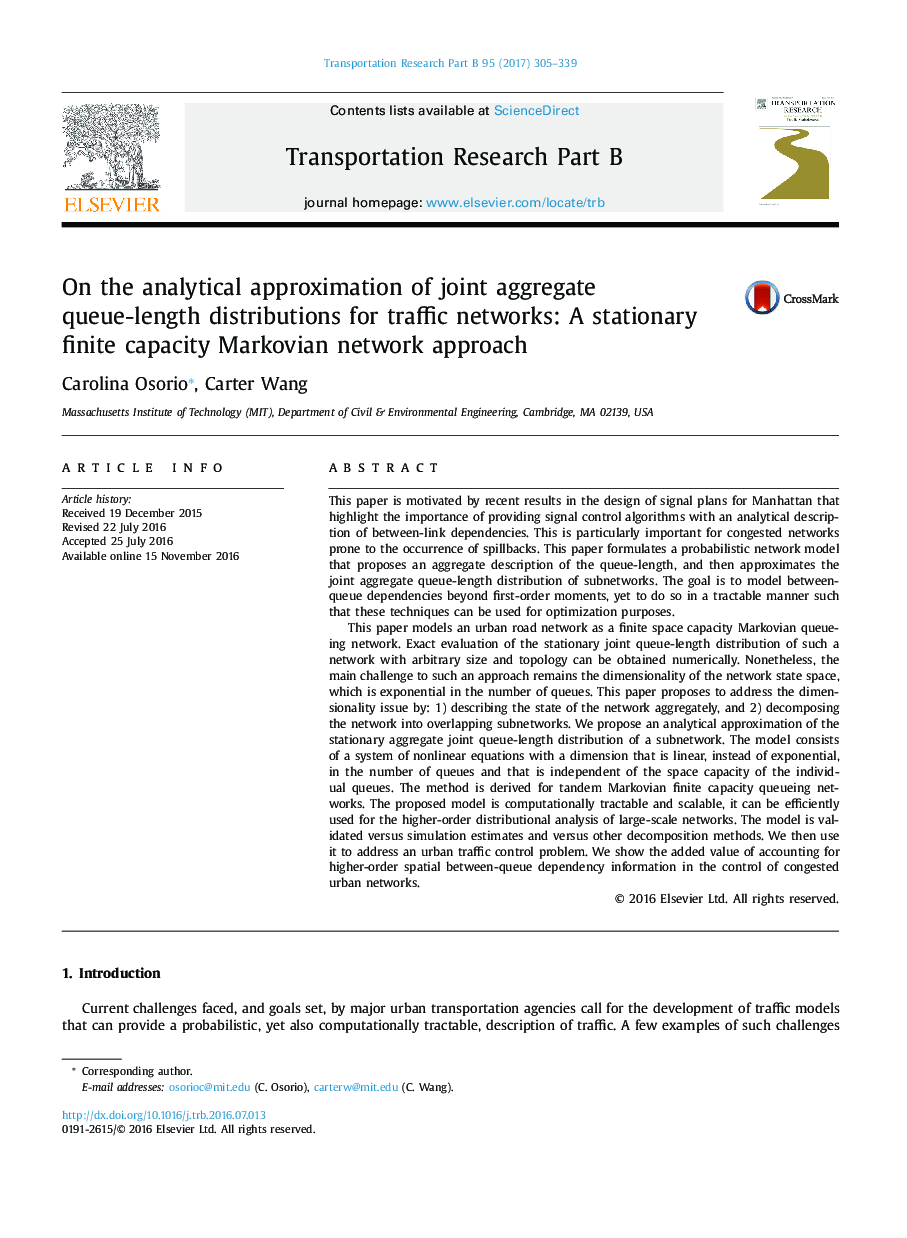| کد مقاله | کد نشریه | سال انتشار | مقاله انگلیسی | نسخه تمام متن |
|---|---|---|---|---|
| 5127102 | 1488951 | 2017 | 35 صفحه PDF | دانلود رایگان |

- This paper proposes an analytical network model that approximates joint queue-length distributions and addresses the curse of dimensionality by combining ideas from decomposition methods with aggregation-disaggregation techniques.
- The model is formulated as a system of nonlinear equations with a dimension that is linear, instead of exponential, in the number of queues and that is independent of the space capacity of the individual queues. This makes it computationally tractable and scalable, it can be efficiently used for the higher-order distributional analysis of large-scale networks.
- The model is used it to address an urban traffic control problem. We show the added value of accounting for higher-order spatial between-queue dependency information in the control of congested urban networks.
- This paper contributes to the development of analytical traffic models that provide a higher-order description of between-link dependencies. This is particularly important for the design and operations of congested urban networks prone to the occurrence of spillbacks.
This paper is motivated by recent results in the design of signal plans for Manhattan that highlight the importance of providing signal control algorithms with an analytical description of between-link dependencies. This is particularly important for congested networks prone to the occurrence of spillbacks. This paper formulates a probabilistic network model that proposes an aggregate description of the queue-length, and then approximates the joint aggregate queue-length distribution of subnetworks. The goal is to model between-queue dependencies beyond first-order moments, yet to do so in a tractable manner such that these techniques can be used for optimization purposes.This paper models an urban road network as a finite space capacity Markovian queueing network. Exact evaluation of the stationary joint queue-length distribution of such a network with arbitrary size and topology can be obtained numerically. Nonetheless, the main challenge to such an approach remains the dimensionality of the network state space, which is exponential in the number of queues. This paper proposes to address the dimensionality issue by: 1) describing the state of the network aggregately, and 2) decomposing the network into overlapping subnetworks. We propose an analytical approximation of the stationary aggregate joint queue-length distribution of a subnetwork. The model consists of a system of nonlinear equations with a dimension that is linear, instead of exponential, in the number of queues and that is independent of the space capacity of the individual queues. The method is derived for tandem Markovian finite capacity queueing networks. The proposed model is computationally tractable and scalable, it can be efficiently used for the higher-order distributional analysis of large-scale networks. The model is validated versus simulation estimates and versus other decomposition methods. We then use it to address an urban traffic control problem. We show the added value of accounting for higher-order spatial between-queue dependency information in the control of congested urban networks.
Journal: Transportation Research Part B: Methodological - Volume 95, January 2017, Pages 305-339